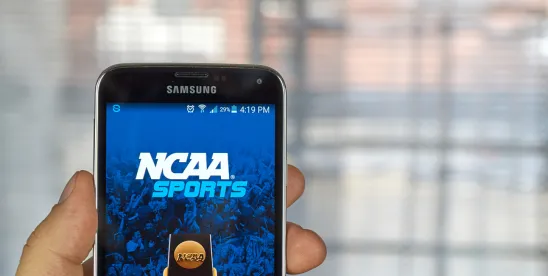After five years of litigation and negotiations, an antitrust settlement between the NCAA, the Power Five Conferences (Pac-12, Big Ten, Big 12, SEC, and ACC), and current and former Division I student-athletes has been approved by U.S. District Judge Claudia Wilken. The landmark agreement reshapes the collegiate sports world as it completes the NCAA’s transition away from amateurism and sets the terms on how student-athletes can be compensated.
While the settlement resolves many of the issues raised in litigation, the agreement creates a host of potential legal ambiguities, and its implementation poses serious challenges that will need to be resolved in the future.
About the Agreement
The settlement changes the foundation of collegiate athletics in that student-athletes may now receive revenue directly from their universities. On July 1, 2025, colleges in the Power Five Conferences were authorized to begin directly paying current student-athletes for the first time in collegiate sports history. This year, participating schools may share up to 22% of what an average Power Five school makes from media rights, ticket sales, and sponsorships to their student-athletes. The sharing amount will increase during the revenue-sharing part of the agreement. The cap for the 2025-2026 academic year has been set at $20.5 million per school.
While the revenue-sharing element of the deal is final, the back-pay element is still under appeal. Pending appellate decisions, eligible current and former NCAA Division I student-athletes will receive a share of a $2.576 billion settlement fund over ten years as back-pay for lost financial opportunities during their collegiate sports careers. The large settlement fund will be distributed to class members by a House class counsel and a settlement administrator.
As part of the settlement, Division I schools outside of the Power Five Conferences can “opt in” to the new system and share revenue with their student-athletes. Ross Dellinger of Yahoo Sports reported that 319 Division I schools (roughly 82% of Division 1 programs) opted into revenue-sharing by the July 1 deadline.
In addition to revenue sharing, the House settlement eliminates the NCAA’s scholarship limits in favor of allowing participating schools to offer full scholarships to every student-athlete on a team’s roster. However, the settlement also adds student-athlete roster limits to each individual sport.
The settlement also creates the College Sports Commission (CSC), which will manage the new revenue-sharing system, set roster limits, and ensure that third-party NIL deals are fair and comply with the commission’s regulations. The CSC will monitor the new system through oversight and will provide arbitrators to settle related disputes.
Potential Revenue-Sharing Disputes
Despite the settlement laying out the revenue-sharing procedures and the CSC managing the cap, the agreement leaves many unsettled issues that will ultimately lead to litigation.
Because the House agreement is silent as to which sports and players participating universities elect to share revenue with, allocation decisions by universities entail legal risks. Consideration of fairness could prompt statutory and perhaps even constitutional challenges to funding allocations. As a result of legal risks, some university athletic directors have voiced support for a collective bargaining agreement.
As with other university matters, Title IX[1] applies to collegiate athletics and can create legal risks for universities during allocation decisions. Already, several colleges have decided to give almost all of their available revenue-sharing money to men’s sports and male athletes. Other schools have allowed more men’s teams to participate in the revenue sharing than women’s teams (e.g. revenue sharing with three men’s teams and one women’s team). These decisions will open the door to litigation. Indeed, the settlement has already provoked Title IX litigation as eight female athletes filed an appeal regarding the back pay portion of the settlement.
Transfer portal activity could also give rise to legal disputes. The University of Wisconsin and VC Connect have already filed a lawsuit against the University of Miami, alleging that Miami committed tortious interference by tampering with a revenue-sharing agreement with former Wisconsin cornerback Xavier Lucas. The lawsuit leads to questions about tampering and potential tampering claims under the new settlement.
NIL Collectives
Finally, third-party NIL still exists post-settlement. NIL collectives will likely adjust to the agreement and uncover additional legal issues. There could also be legal and arbitration troubles if universities and collectives try to circumvent the CSC. Nonetheless, an influx of money to players through universities and collectives increases student-athletes’ needs for legal counsel for several matters such as tax law.
[1] Title IX is a federal civil rights law which prohibits sex-based discrimination in any school or education program that receives federal funding.





 />i
/>i
